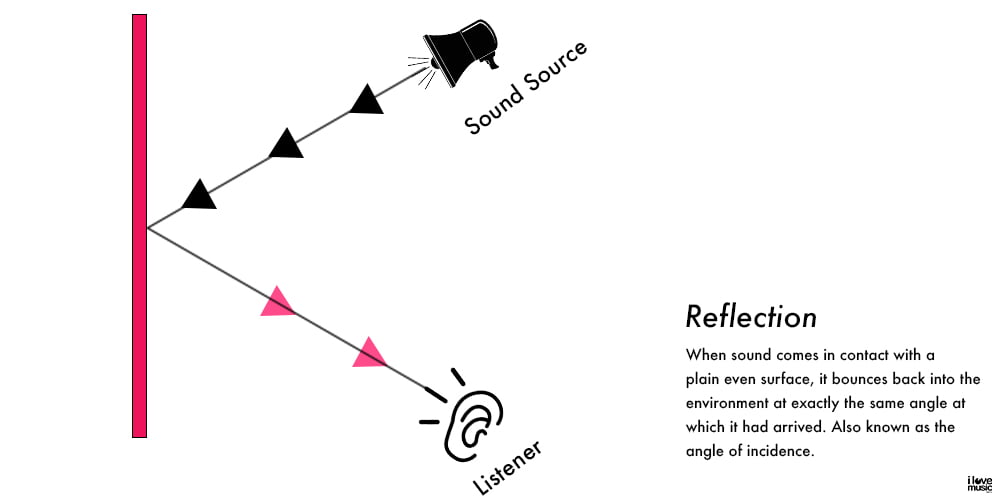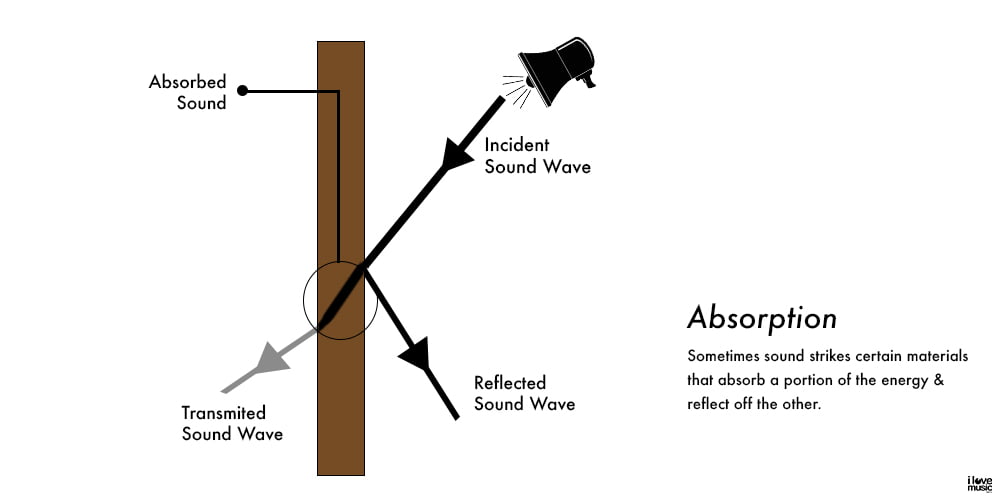What are Acoustics?
The process of understanding how sound reacts or interacts within a specific enclosed environment is termed “Acoustics“. When sound interacts or comes in contact with any material it is either absorbed, reflected or refracted, changing the acoustics of the environment. Hence the material with which the sound comes in contact is of utmost importance!
What is Reflection of Sound?
Reflection occurs when a material bounces the sound back. The angle at which the sound reflects back is known as the angle of incidence. This angle depends on the angle and shape of the wall. Sound falling on a straight wall will differ from sound falling onto a curved wall. The amplitude and the strength of the reflections are dependent upon the material of the surface and the frequency of sound hitting it.

What is Absorption of Sound?
Instead of being reflected, when sound passes completely into a material, absorption occurs. The amount of absorption depends upon how porous the material is and also, on the frequency of the sound which is absorbed. High frequencies are easily absorbed because of their short wavelength.

What is the Refraction of Sound?
When sound enters a certain material and its direction of propagation is changed, due to the density of the material, the sound is known to be refracted.

What is Diffraction of Sound?
Diffraction is defined as the ability of a sound wave to bend around a material. In Nature, this helps animals like elephants and whales communicate over long distances, even though the wave path may have several obstructions.

What is the Absorption coefficient of a material?
The absorption coefficient is the absorption power of any material measured as a single number used to determine the effectiveness of sound-absorbing materials for noise control. It is the ratio of energy absorbed by a material to the energy incident upon its surface. Soft materials have a better absorption coefficient compared to hard surfaces.
The Absorption coefficient is generally represented by the Greek letter Alpha. When the absorption coefficient equals one, all the sound is absorbed v/s when the absorption coefficient equals zero, none is absorbed.
In simple words, the ratio of sound that is absorbed and the portion that is reflected back is known as “the absorption coefficient. It is a figure between 0 (reflective) & 1( highly absorptive).
For example :
If a piece of wood has an absorption coefficient of 0.15. This means that wood absorbs 15% of acoustic energy while reflecting 85% of it back. The Absorption coefficient table usually will show which frequencies will be absorbed with known construction materials.
You can find the absorption coefficient of some of the most common materials below:
http://www.sengpielaudio.com/calculator-RT60Coeff.htm
The above understanding of acoustics and its terms is a must to progress with a studio’s construction & setup.
















